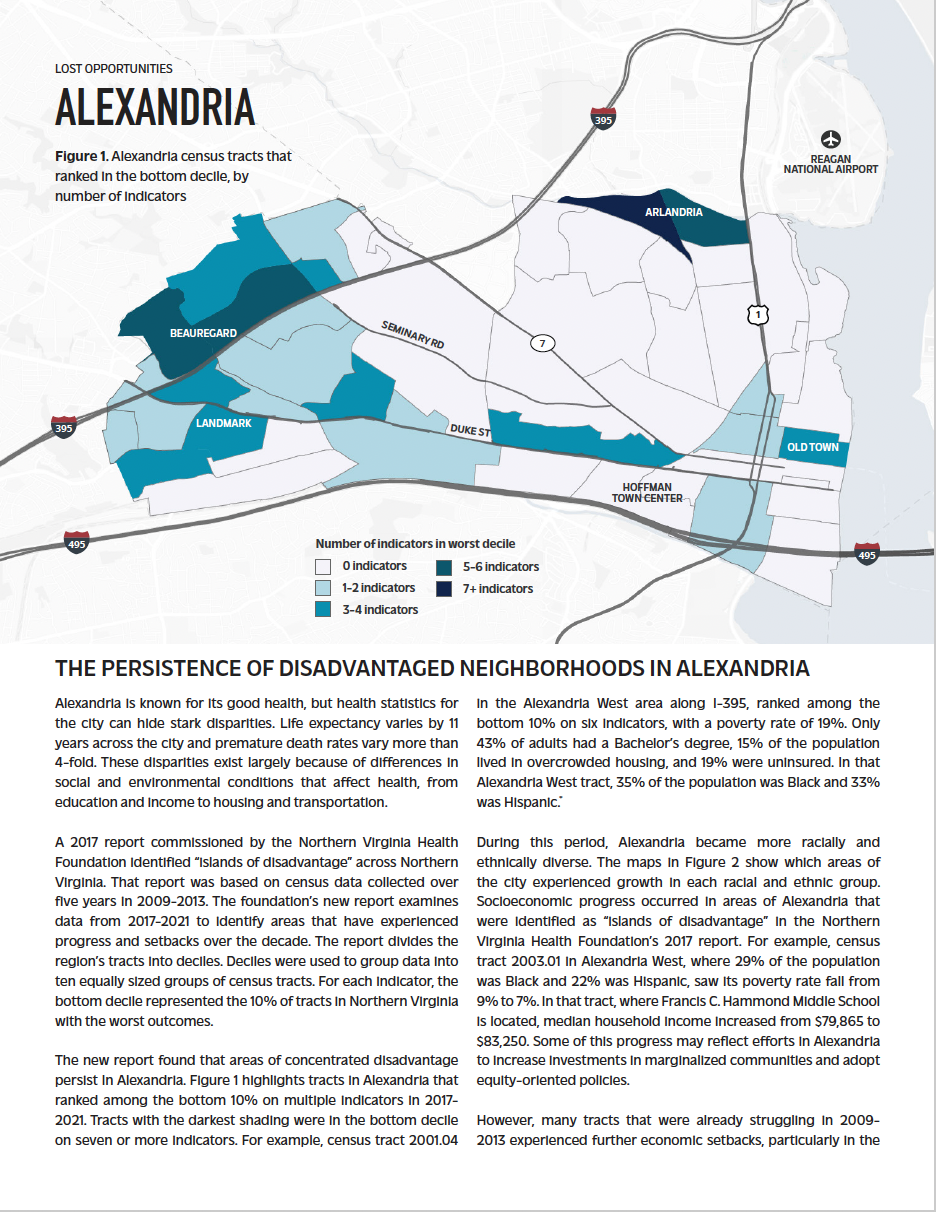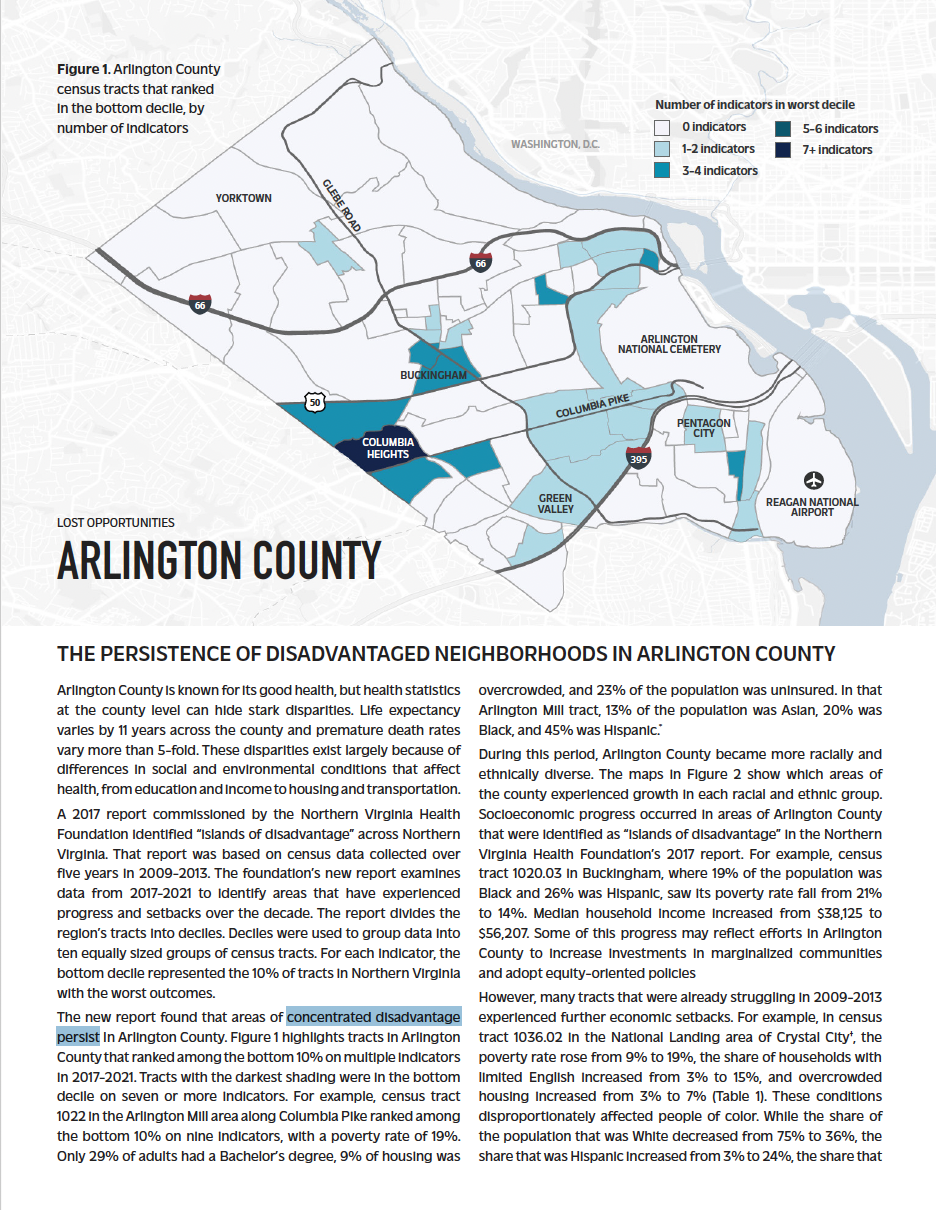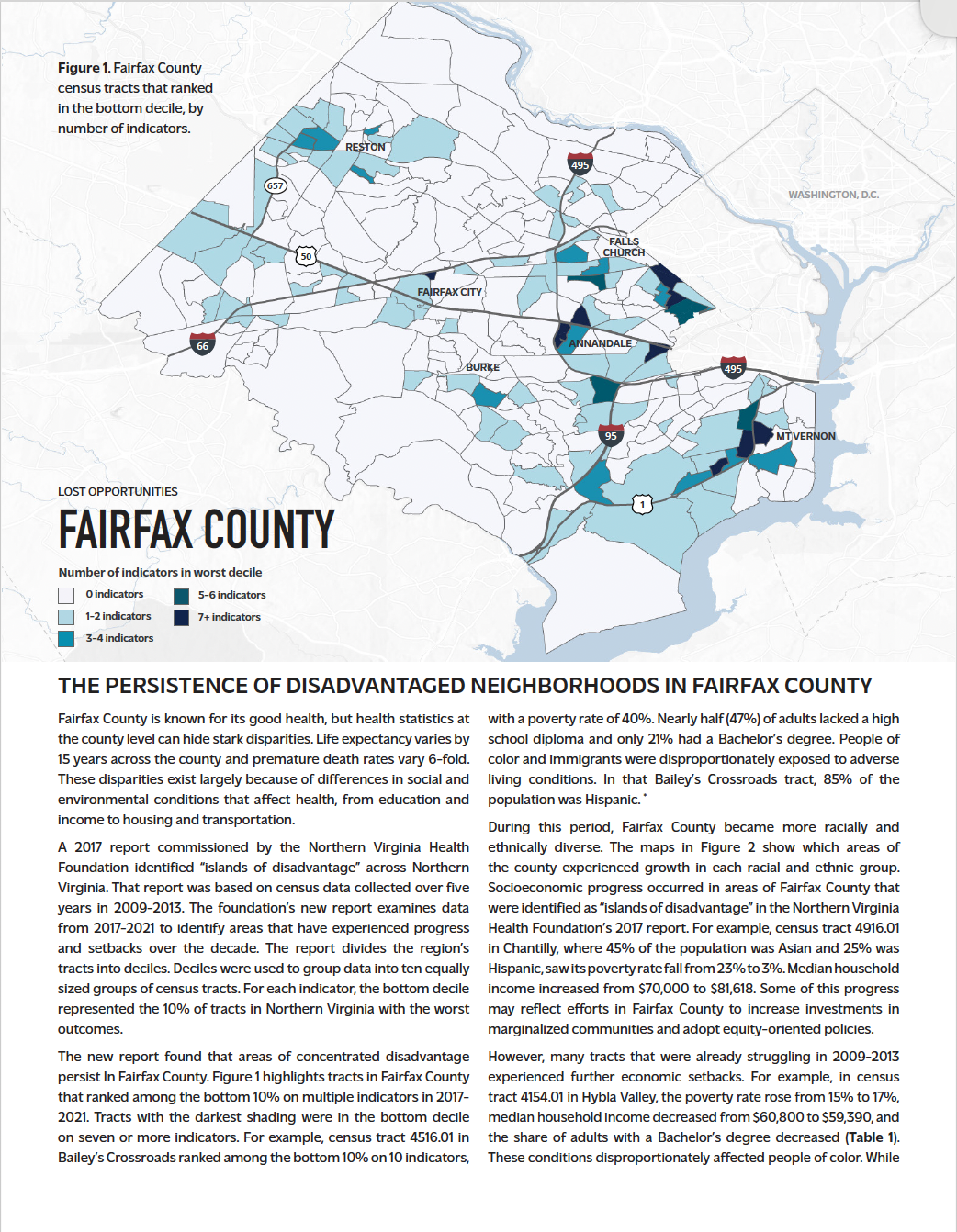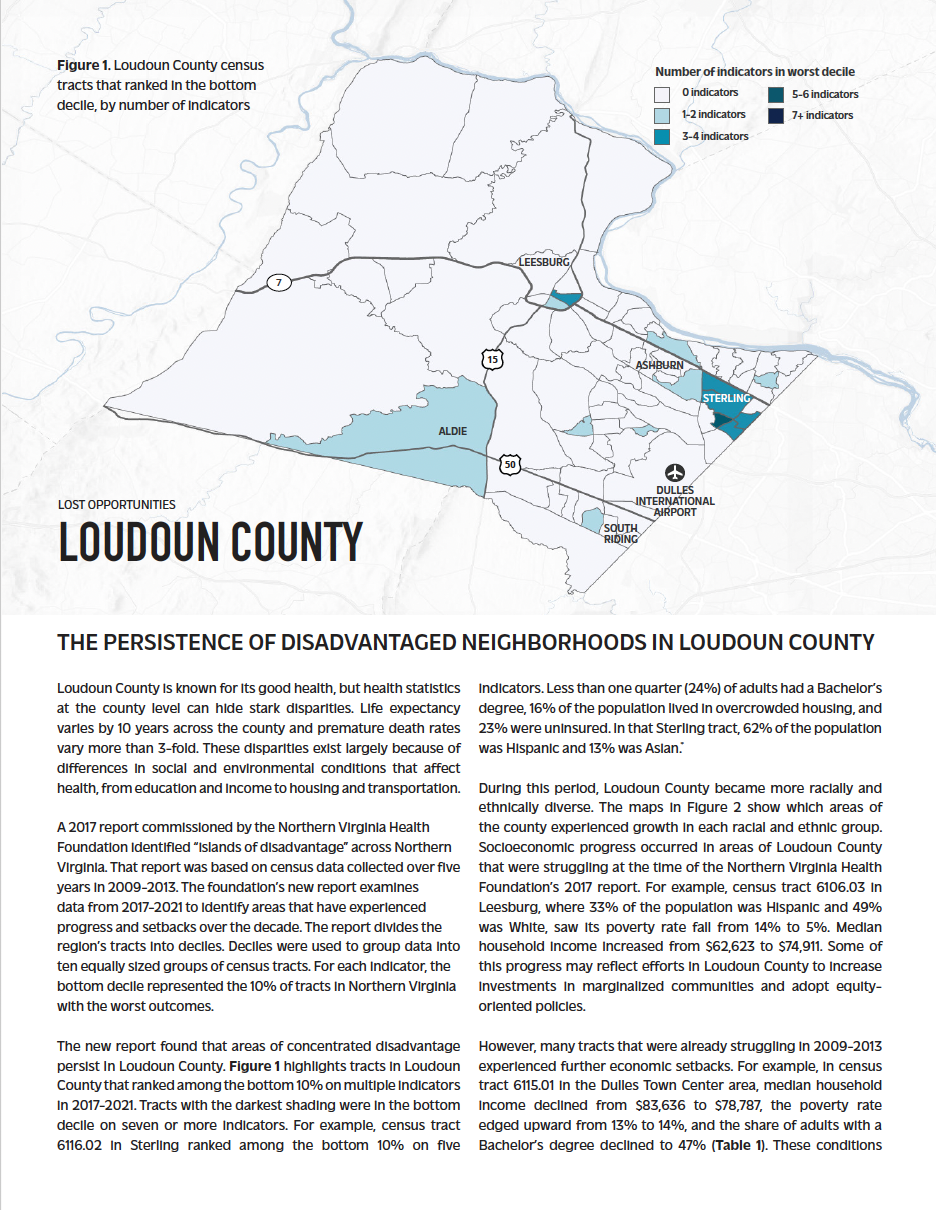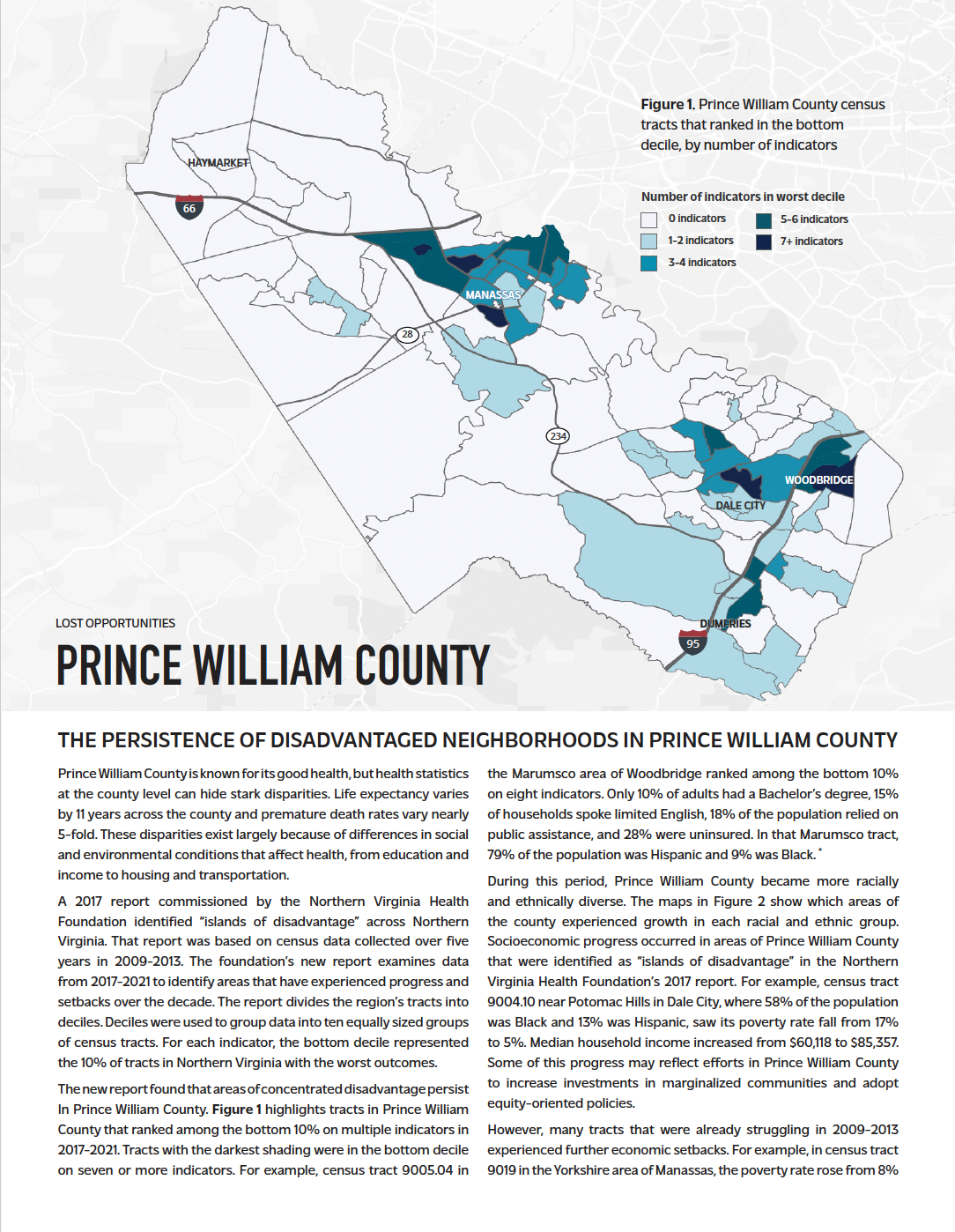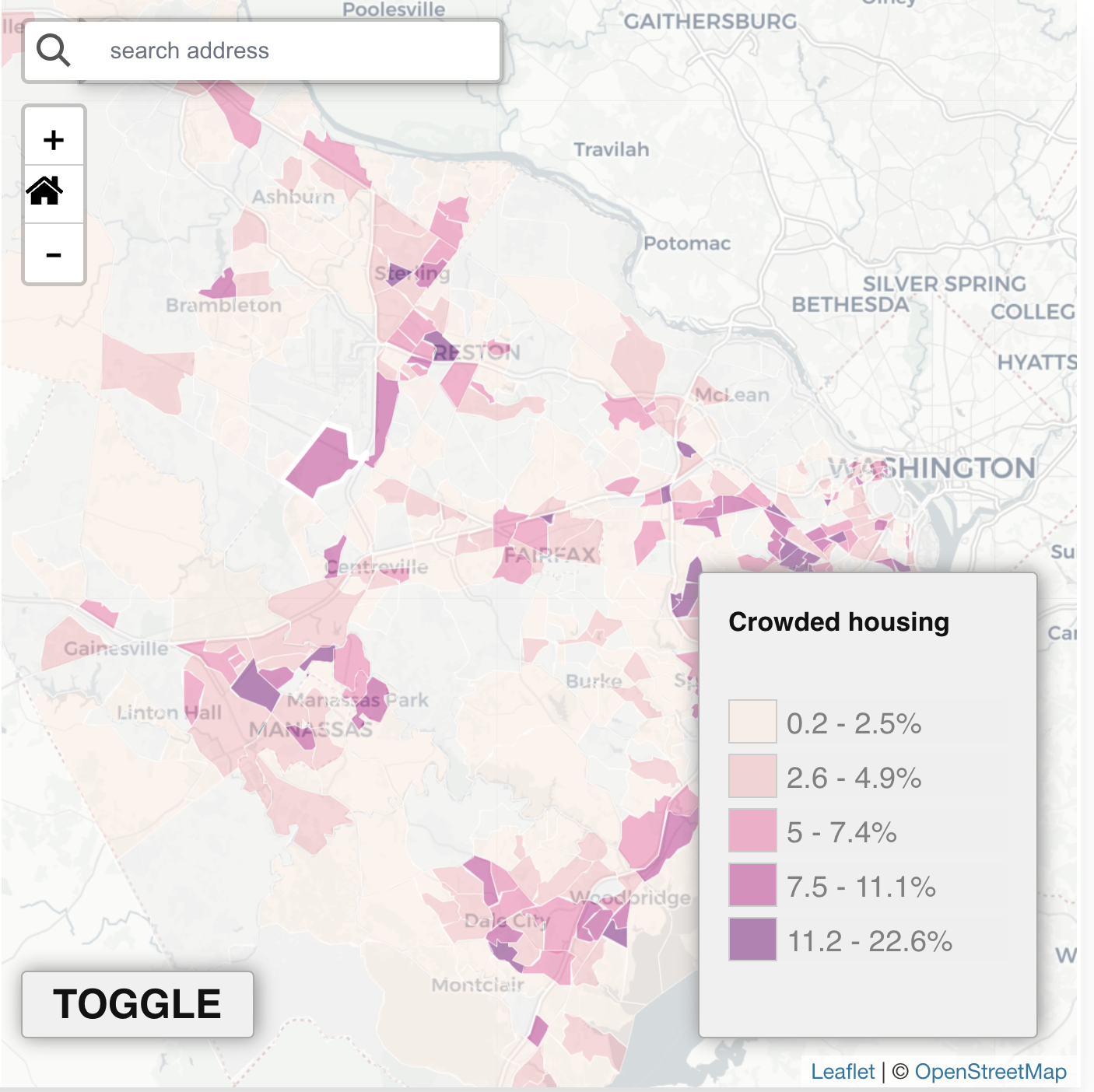Lost Opportunities: The Persistence of Disadvantaged Neighborhoods in Northern Virginia
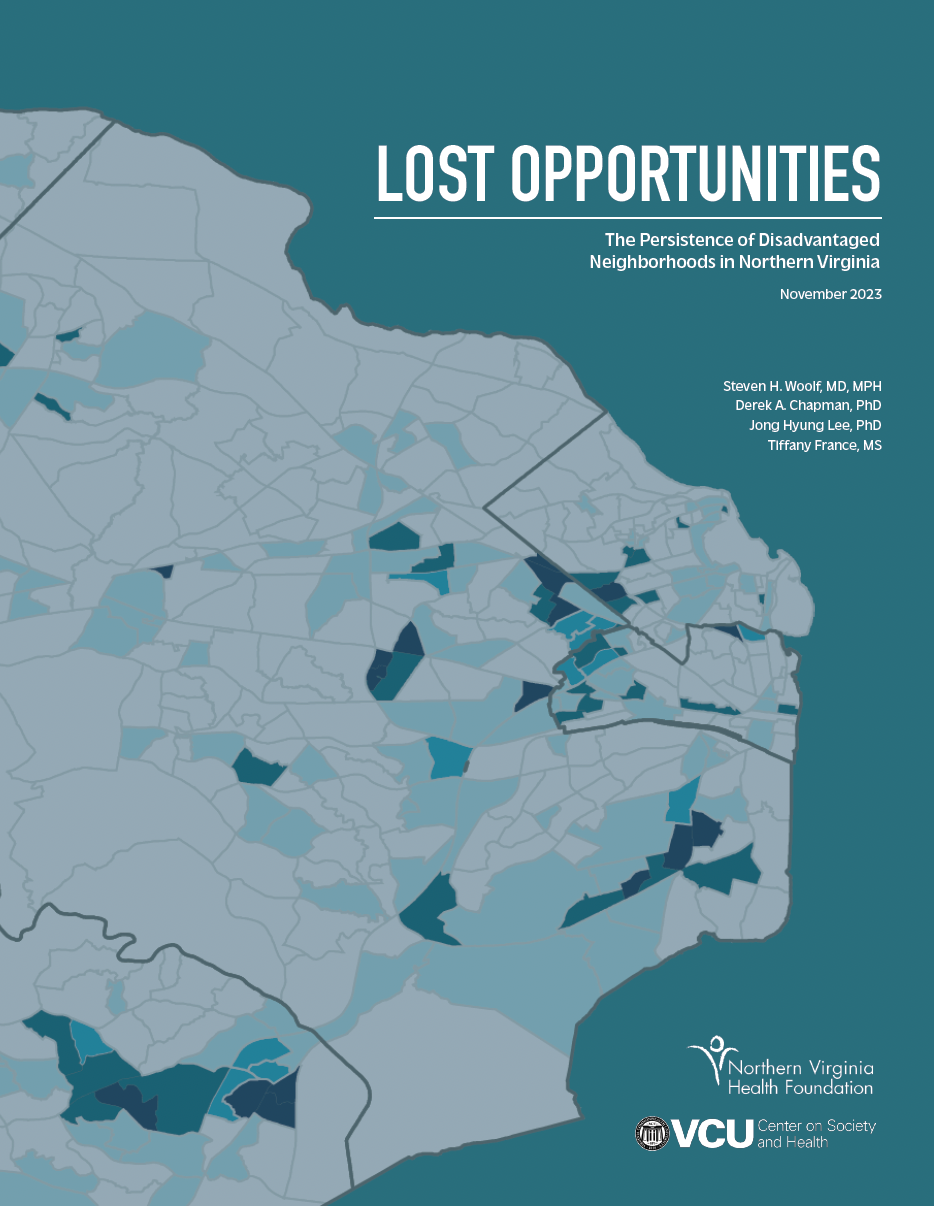
The Issue
Northern Virginia is among the healthiest—and wealthiest— regions of the Commonwealth, but a closer examination reveals that the health and wellbeing of many residents varies greatly across the region.
What the Study Found
Northern Virginia experienced considerable social and economic progress between 2009 and 2021.
Between 2009 and 2021, poverty rates fell in 52% of the region’s census tracts. Median household income increased in 92% of census tracts, the proportion of adults with a high school diploma increased in 59%, and the share with a bachelor’s degree increased in 73%. The uninsured rate decreased in 78% of tracts.
Some of the "islands of disadvantage," shared in these gains.
One predominantly non-White neighborhood along Columbia Pike in Arlington County experienced a 34% reduction in poverty. Median household income increased from $42,571 to $64,872, and the proportion of the population that was uninsured or relied on public assistance decreased by 43% and 33%, respectively.
But many of the "islands of disadvantage" missed out on the region's progress.
Since 2017, living conditions have worsened or stayed the same in many of the region's "islands of disadvantage", even as wealthier communities nearby enjoyed significant progress.
For example, in one economically marginalized section of Bailey’s Crossroads in Fairfax County, the poverty rate climbed from 17% in 2009-2013 to 30% in 2017-2021. Child poverty nearly doubled, from 32% to 63%. The neighborhood also experienced setbacks in educational attainment and English literacy, employment, and overcrowded housing. These conditions disproportionately affected people of color.
Gentrification and displacement may be driving economic growth in some parts of Northern Virginia.
For example, in the Courthouse area of Arlington County, median household income increased from $87,233 to $132,603 and the poverty rate plummeted from 19% to 5%. However, the share of the population that was White grew from 48% to 68%, while that of the Black and Asian populations declined by 42% and 72%, respectively. Similar displacement appears to have occurred in Old Town Alexandria, areas of Annandale, and in the historically Black neighborhood of Green Valley/Nauck.
Policy Solutions
The persistence of concentrated areas of disadvantage in Northern Virginia, a region known for its affluence and resources, underscores the need for targeted investment in marginalized neighborhoods. The report authors suggest prioritizing the following:
Education
Employment opportunities and benefits
Affordable Transportation
Environmental justice
Food Security
Affordable housing
Access to health care
Attention to systemic racism, opportunity and inclusion
Concentrated Disadvantage by Jurisdiction
Areas of concentrated disadvantage persist by jurisidiction in Northern Virginia. Download the resources below to see how it varies across the region.
